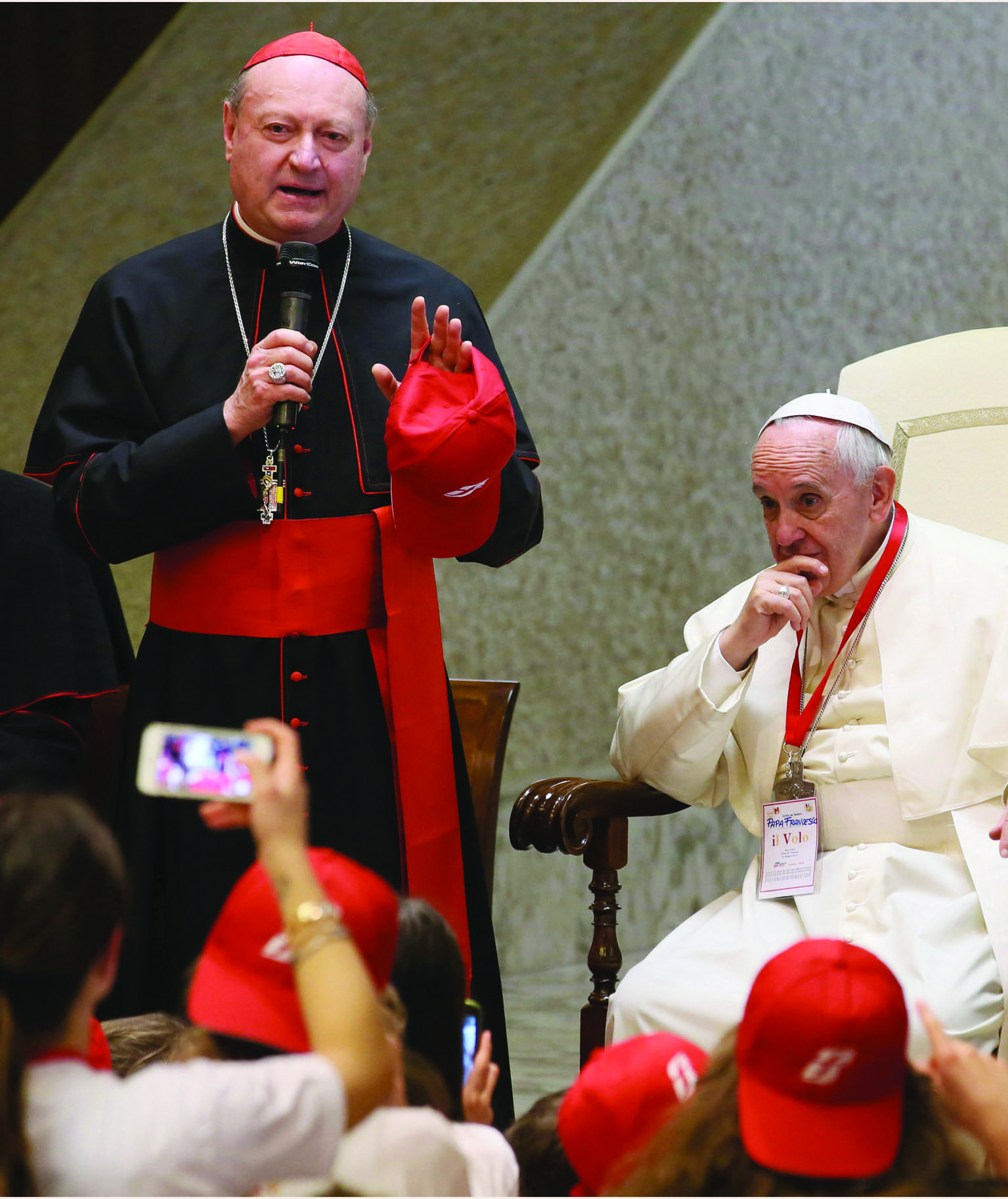
Pope Francis and Cardinal Ravasi meet participants in the Children’s Train, an initiative promoted by the Pontifical Council for Culture
President of the Pontifical Council for Culture
Since this interview concerns your book The Spiritual Significance of Eating, to be published on June 1 in English by Crossroad Publishing, what are your first memories of food?
Cardinal Gianfranco Ravasi: I was born during World War II, when procuring food was extremely difficult, especially in big cities. My mother and I fled Milan for the village of Santa Maria Hoè, in Brianza, where she was born and her parents still farmed. My first food memories are of milk straight from the cow and still foamy.
Of eating?
Ravasi: The midday meal with my mother’s clannish relatives on the feast day of our village’s patron saint was one of the few times a year we ate meat because it was a delicacy. It was usually chicken from my family’s farm. I was two or three years old. Special religious occasions, like baptisms, saint’s days, weddings, anniversaries, even funerals, have always had a food component. Paradoxically, today fiancés frequently reserve the restaurant before the church.
When I interviewed Monsignor Iacobone about the Holy See’s Pavilion at Expo, he said that, besides causing bulimia, anorexia, and obesity, fast food has destroyed the conviviality of family and friends sitting around the table and even eating from the same plate. Do you agree?
Ravasi: Yes, because, although there’s plenty of food today, there are no more meals. People eat to alleviate hunger, often alone, so without communication. Instead, a meal presupposes communication. In the past, the few times people could afford a restaurant, they went as a family or as a group of friends, usually to celebrate a special occasion. Today, when people go to a restaurant with family or friends, everyone spends the time communicating with their virtual friends on their mobiles, not talking across the table.
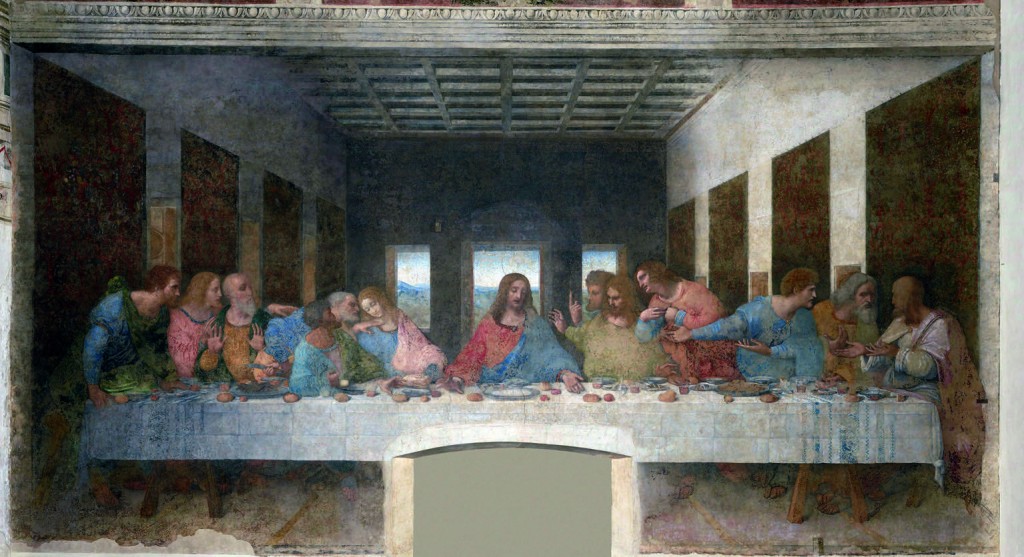
Leonardo da Vinci’s “The Last Supper”
Fast food only alleviates hunger. Nothing more. Brillat-Savarin said, “Animals feed themselves; men, a bit distracted, eat, but only wise men know the art of eating.” One shouldn’t only eat to survive, but to communicate. It seems that today this is true only at business conferences, weddings, baptisms, wakes, important family events where the food is still only one aspect, not the occasion’s end-all-and-be-all.
So what’s fast food’s connection to bulimia and anorexia?
Ravasi: In the past we communicated while eating. Instead, anorexia and bulimia underline our egotistical and complex rapport with food today. Life is beautiful, but if people have a difficult rapport with life, they express it through food, hence bulimia and anorexia, rejecting food. If people reject food, they also reject life.
What’s your definition of “fast food”?
Ravasi: Fast food’s only benefit is that the disadvantaged can eat at lower prices. Fast food severely damages the beauty of food. All the TV programs about food and cuisine are attempts to overcome this loss and to show that food has an aesthetic dimension as well as a sacred one, and not only the Eucharist. In many non-Christian religions there’s always the “vegetable sacrifice” and the “banquet of communion.” Psalm 23 also refers to food and drink and to the “sacrifice of communion” with God.
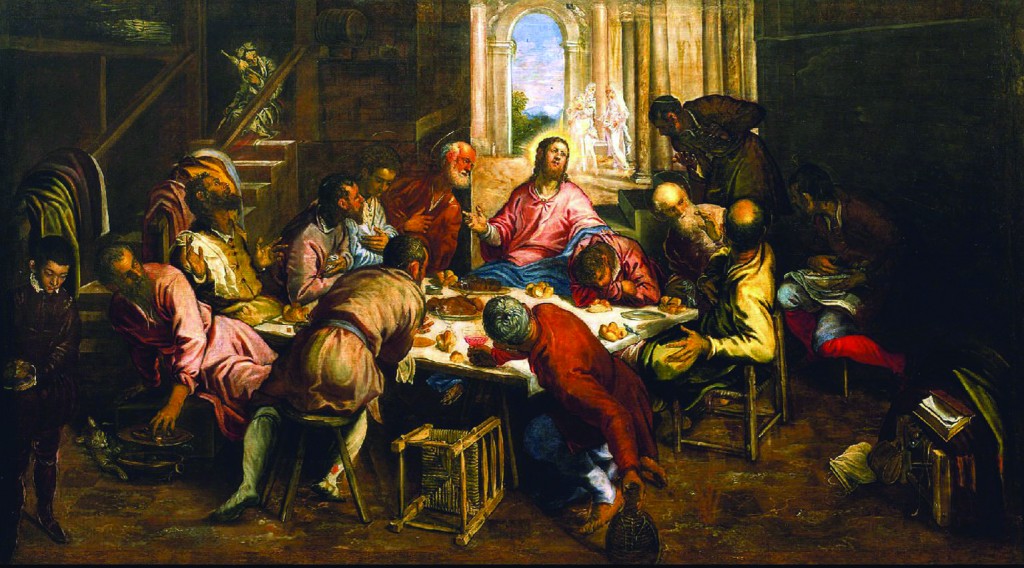
Tintoretto’s “Last Supper”
Many foods are mentioned in the Bible. Except for bread, which you yourself say is mentioned 97 times in the New Testament, food is mentioned more often in the Old Testament. Why?
Ravasi: I think it’s because the Old Testament describes historical events, even if in the New Testament there’s the “Multiplication of the Loaves.” Here Jesus did not bake more bread; rather he convinced those present to share what they had. St. Paul also mentions to his disciple Titus the necessity of wine. There’s also a curiosity. In Hebrew lehem means bread or nutrition in general, but strangely its etymological root lhm is the same as that of nulhamah which means “war” and is similar to the word for “salt.” In Acts, when Christ ate with his disciples, the text reads “he shared salt,” not a meal. This may explain why Titian placed a salt shaker on the table in his painting Supper of Emmaus, now in the Louvre.
What are the most meaningful passages in the Bible about food and conviviality?
Ravasi: There are many, but above all the Last Supper, because of its allusion, its connection to the Hebrew Passover Supper, with its unleavened bread and lamb. Secondly, the multiplication of the loaves, because Christ’s gestures are the same as those of the Last Supper. He looks towards heaven, blesses, and breaks bread. In Acts 2:42, the four pillars of Christian life are the Apostles’ teachings, fraternal communion or fellowship, the breaking of bread or the Eucharist, and prayer. The “Multiplication of the Loaves” is an act of compassion, the symbol of Christ’s sacrifice and love, the Eucharist.
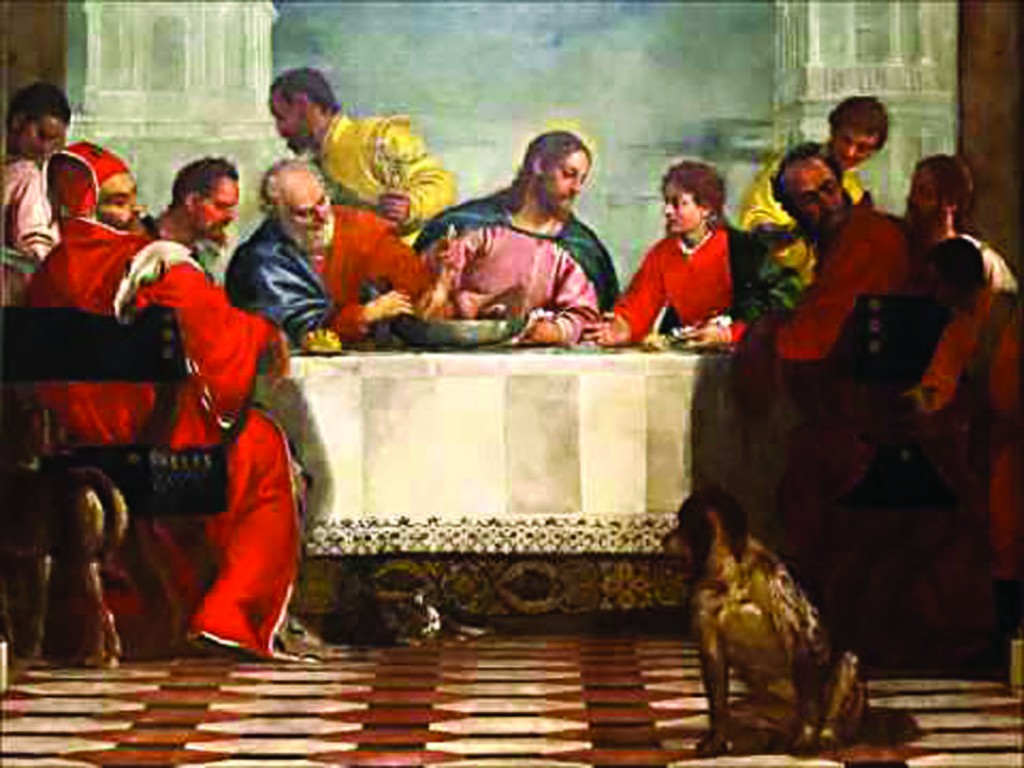
Veronese’s “Last Supper”
Isn’t the Last Supper the most often-painted Biblical meal? Bread and wine are omnipresent, but do Jesus and the disciples always eat the same foods in every painting of the Last Supper?
Ravasi: Yes, it’s the most painted meal. Yes, there’s always bread and wine, but no, the setting and the foods change according to the epoch and location of the painter. Let’s not forget that Jesus loved to eat and was even accused of being a glutton and a drunkard, the opposite of St. John the Baptist who only ate locusts and wild honey alone in the desert.
You are the president of the Pontifical Council for Culture. Besides those in the Bible, what are your favorite literary passages and artworks concerning food and conviviality?
Ravasi: Petronius’ Satyricon and the Last Suppers painted by Tintoretto, Veronese, and Leonardo.
What’s your favorite artistic media?
Ravasi: I’m eclectic, so I love the multiple expressions of art, but I especially love music and, in particular, Bach. I listen to David Bowie, 12-tone music, Stravinsky and Berg too.
When it comes to art, I was very lucky. For 18 years I was the director of Milan’s Ambrosiana Painting Gallery with many works by Raphael, Leonardo, Botticelli, and Caravaggio. I find Caravaggio the most captivating painter, especially his two Suppers of Emmaus, one in the National Gallery of London, and one in the Brera in Milan.
Do you paint, photograph, compose, play a musical instrument?
Ravasi: No, I have too much respect for the arts. I’m a happy observer and appreciator.
Do you like to cook?
Ravasi: No. My sisters are excellent cooks.
Eating involves all the senses; do you consider chefs artists?
Ravasi: Yes. Preparing food is just as important as eating it.
You’ve written over 160 books. What inspired you to write The Spiritual Significance of Eating?
Ravasi: It was born from my relationship to “Expo.” I oversaw every detail of the Holy See’s Pavilion. I didn’t want it to be too sumptuous or consumer-oriented like many other pavilions with items for sale. Instead, I wanted it to launch a message. There were many symbols of food projected on a long table, but there was nothing to eat on it. The Pavilion’s two mottoes: “Give us this day our daily bread” and “Man does not live by bread alone” also spoke of food.
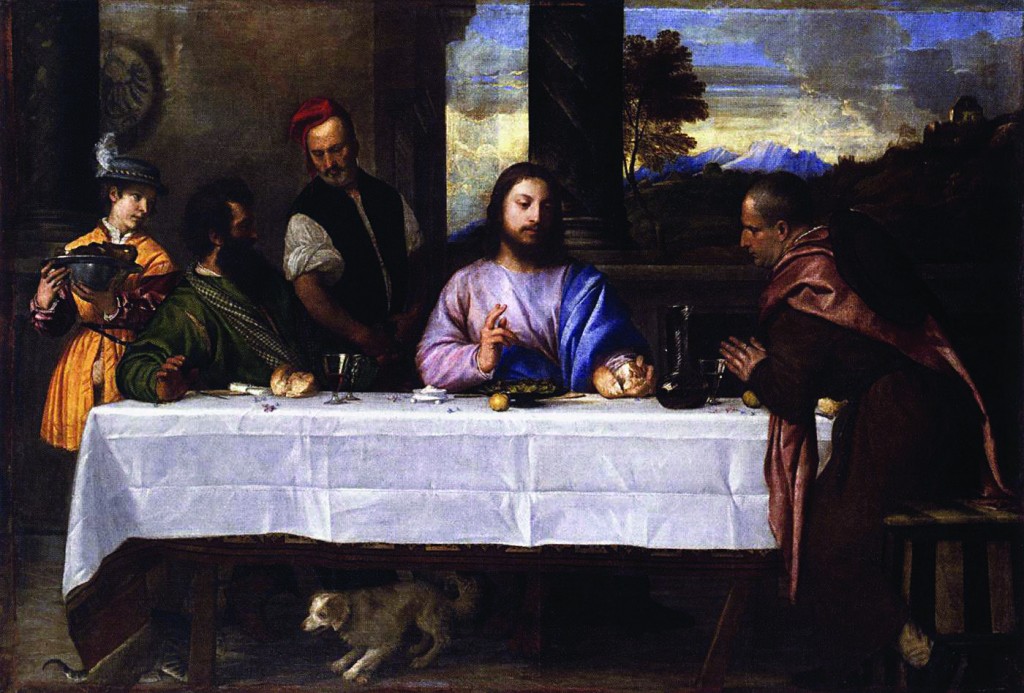
Titian, “Supper at Emmaus,” Paris, Musée du Louvre
Why is the Italian edition printed on brown paper that looks like old-fashioned butcher’s wrappings?
Ravasi: It’s purposefully recycled paper.
You quote Nicolas de Chamfort, a 17th-century philosopher, but still a valid one. He said that the world’s population is of two types: those who have more food than appetite, and those who have more appetite than food. The FAO and IFAD have been battling this injustice for years now; how can they, the world’s governments, the Holy See, and individuals do more for the hungry?
Ravasi: If the world was one large table, we in developed countries would be many fewer people but we’d be sitting on one side not only with too much food, but also with the problem of wasting it. On the opposite side of the table would be seated multitudes of people, but they’d only have crumbs. The world doesn’t want to change this situation. The FAO should — but it’s never had the energy — organize a fairer food distribution worldwide. There’s plenty of food on this earth for everyone. Governments should invest much more money in agriculture and not in arms. Unfortunately, arms produce much more money for governments than food. Rich countries should invest a higher percent of their gross national product in agriculture and food for the poor parts of the world. It’s also the fault of Africa’s despotic leaders whose priority is the purchase of arms and not agricultural products or seeds. The result is the thousands of Sub-Saharan Africans fleeing to Europe. Yes, they’re escaping from wars, but also from starvation.
Another world problem are the many food products under threat of extinction because of climate change. Since food and eating and their uses and abuses are definitely part of culture, shouldn’t food and climate change be a responsibility of the Pontifical Council for Culture?
Ravasi: No, I think this problem is rightly under the competency of the Pontifical Congregation for Justice and Peace. We here at the Council can underline the cultural importance of food. For example, Gandhi said: “No one can work or accomplish his best on an empty stomach.” Just think how much brainpower is wasted because of hunger.
Instead, many now starving people could be creative and socially useful if they weren’t hungry. Brecht said: “People at the top of the social hierarchy, industrialists, politicians, intellectuals, aren’t competent to lecture about hunger and food because they’ve already eaten.”
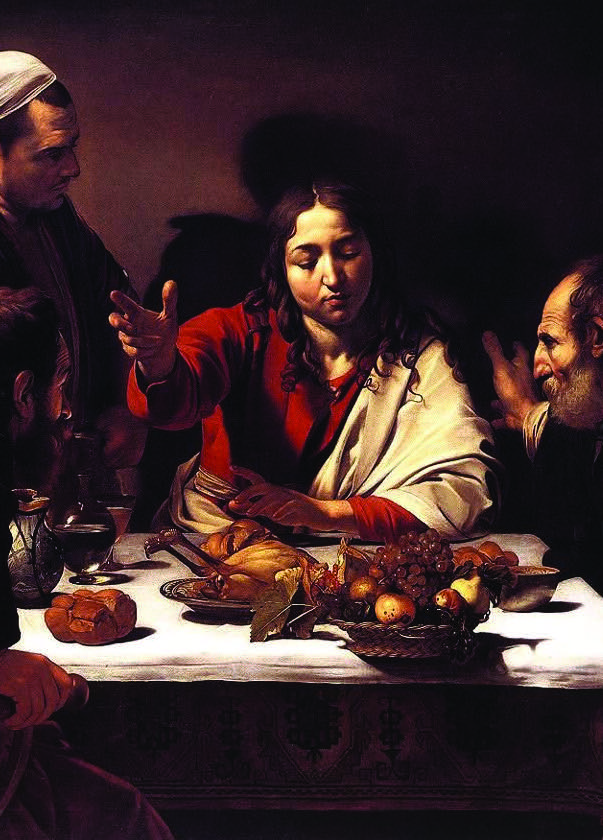
Caravaggio’s “Supper at Emmaus” in London
You devote several pages of The Spiritual Significance of Eating to the importance of water. You believe that in the near future the lack of water will be our biggest catastrophe, right? What can we do to avoid the breakout of water wars?
Ravasi: The Indian researcher Vandana Shiva has written extensively about the future scarcity of water and consequent water wars. Water permits our existence; in the Bible it’s always fundamental realistically and symbolically. In Hebrew “spirit” and “throat” are the same word. Psalm 42:2 says “My spirit is thirsty for a living God.” The encyclical Laudato Sì touches on this theme. Climate change and lack of water touch everybody, rich and poor.
Another important topic you touch on is hospitality or, more broadly, immigration. You quote Jesus (Matthew 10:40): “He who offers hospitality, offers hospitality to Jesus. He who offers hospitality to Jesus also offers it to whoever sent him.” On February 28 at the Angelus the Holy Father asked every European country to divide fairly the responsibility of hospitality to the immigrants who are fleeing war and famine. Do you think Europe’s governments, at least those where the majority of the population is Roman Catholic, will respond positively and remove their barbed wire fences?
Ravasi: Unfortunately, I think it’s very difficult to succeed in shaking people’s consciences. The dominant characteristics of human nature are egoism and fear. Fear is difficult to eradicate. Love your neighbor as you love yourself is utopian, because you start to love yourself and stop there. Fear allows you to see others only negatively, as different and therefore threatening, to be eliminated. When it comes to accepting immigrants, some Eastern European countries are Christian, yes, by tradition, but not in lifestyle. It’s religion, but not faith. The Holy Father is right to insist, and we must too, but I’m pessimistic. Europe can’t come together as a united entity culturally, socially, or politically. It’s only united financially. Europe doesn’t have one capable democratic central government like the United States.
How can the “developed” world prevent food waste, still another serious social injustice?
Ravasi: The first step is by setting an example. It’s necessary to teach children to taste all foods and not just stuff themselves with junk, which makes them obese. We mustn’t forget that obesity is a sickness. As for adults, other big problems are commercial: food distribution and supermarkets. There people find everything they can imagine and more, so they buy lots of things they don’t need and so eventually throw away. It’s not like the local mom-and-pop shop where people buy what they need. So we need to train people not to buy things they don’t need. Happiness today is to go to the mall and buy everything you want without price-tag limits. But buying and possessing cause waste. Yesterday, during the Italian television program Alle Falde di Kilimanjaro (“On the Slopes of Kilimanjaro”) philosopher/historian Professor Vittorio Mancuso pointed out that today there are 2.2 billion Christians in the world and 1.1 billion Muslims, but that in 2050 they will be equal in number.
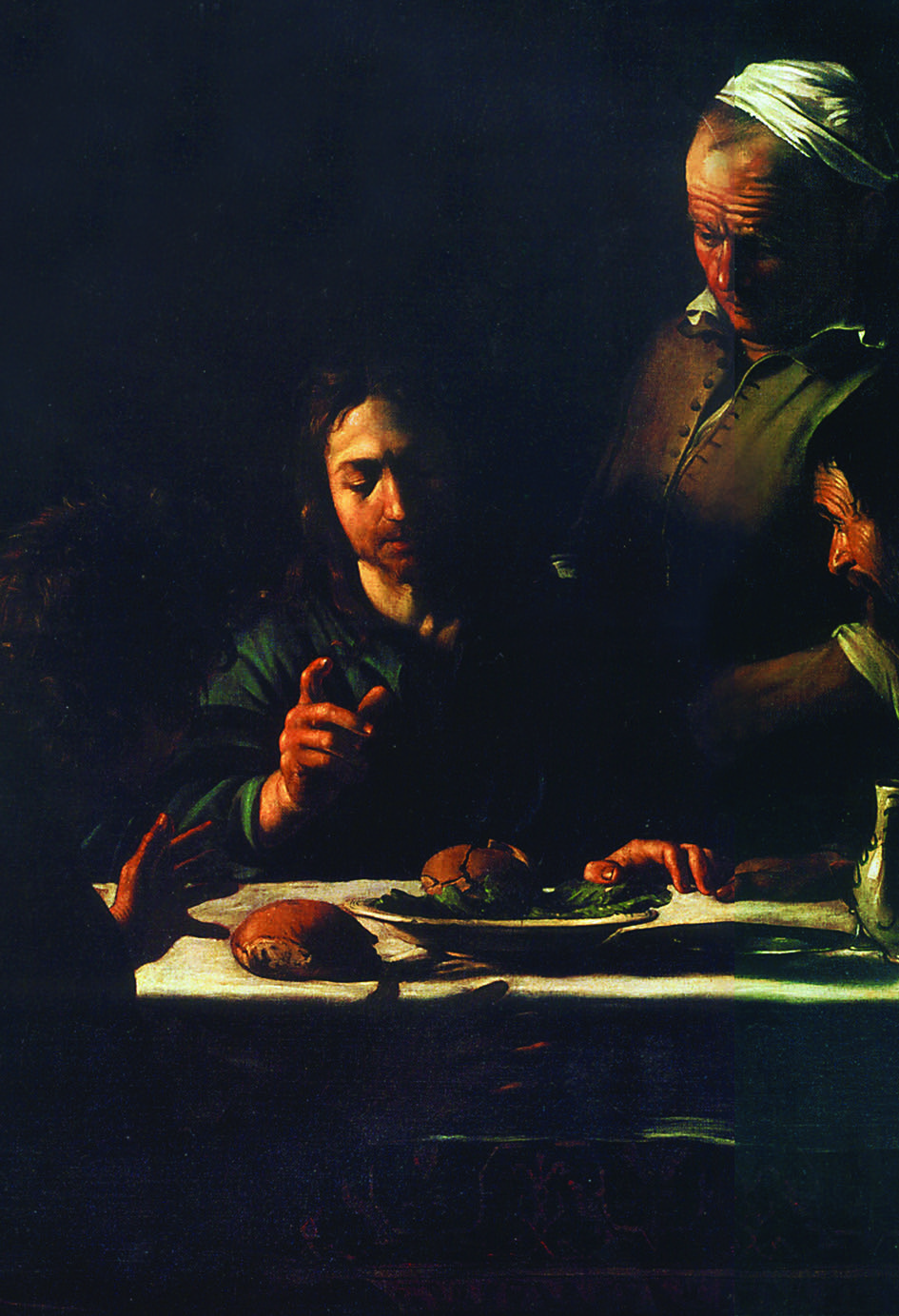
Another version of “Supper at Emmaus” by Caravaggio, now in Milan
What must the Christian Churches do to stop losing their faithful?
Ravasi: The sickness of our times isn’t atheism; it’s indifference.
The second half of The Spiritual Significance of Eating is devoted to the importance of fasting, particularly of “spiritual fasting,” which you define as self-discipline and liberation from consumerism, egoism, owning possessions, and false necessities which we think we cannot live without. All three monotheistic religions preach “spiritual fasting,” but nonetheless the world keeps getting more and more violent. What do you foresee for the future?
Ravasi: Chapter 58 of Isaiah defines “spiritual fasting.” Fasting isn’t not eating; it’s giving to others. This is the difference between dieting and fasting.

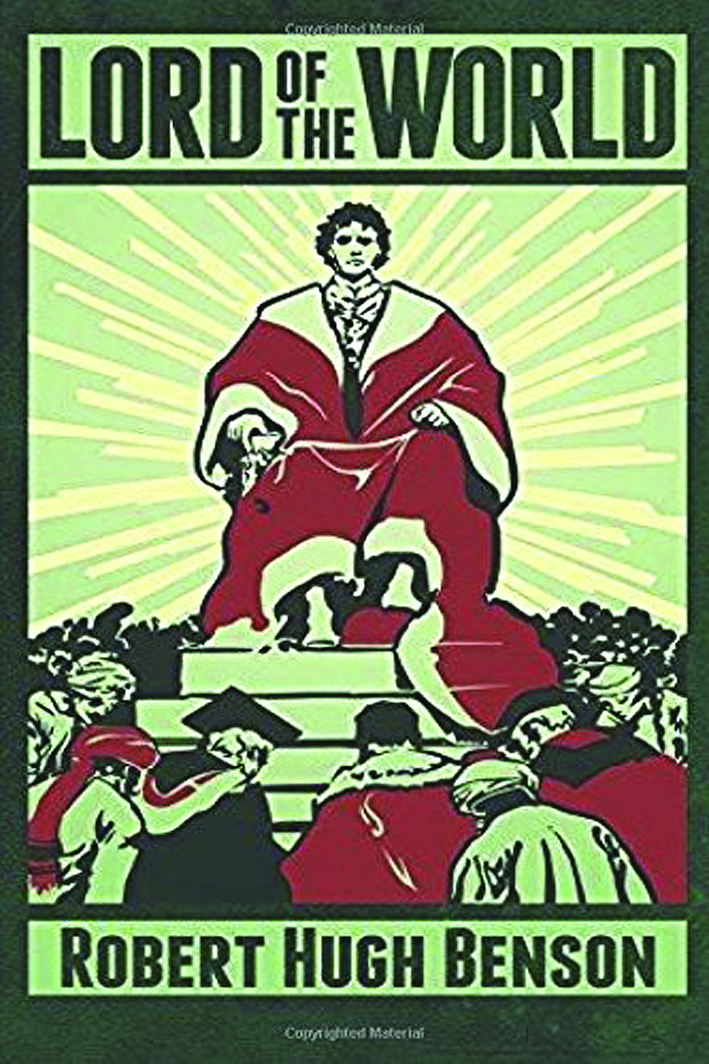
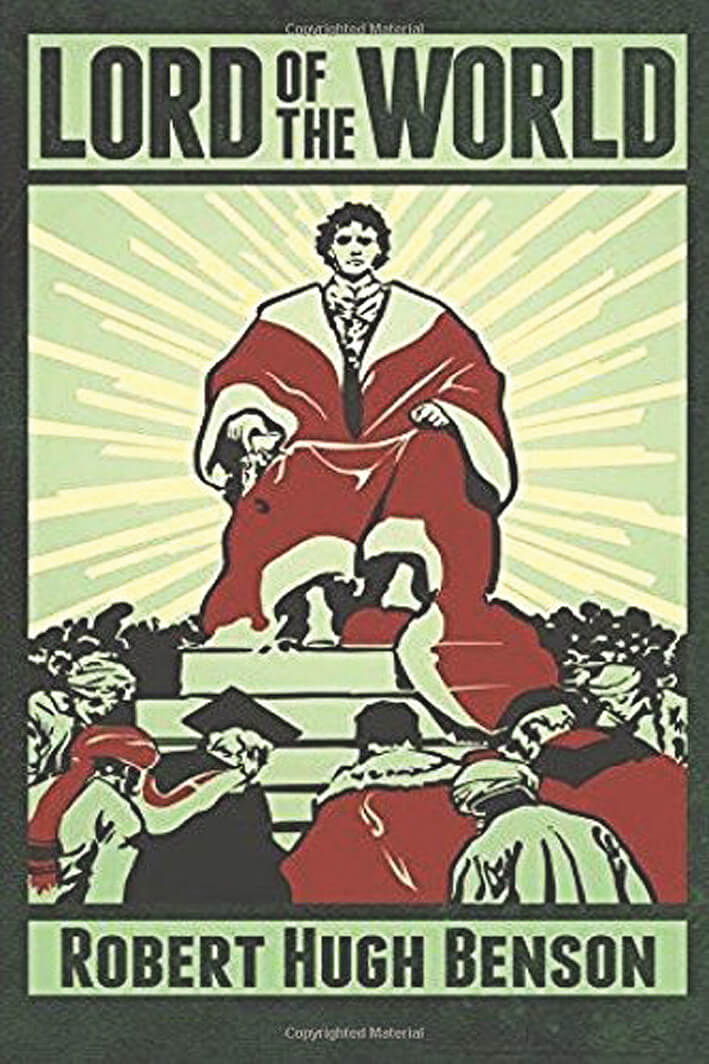
Facebook Comments